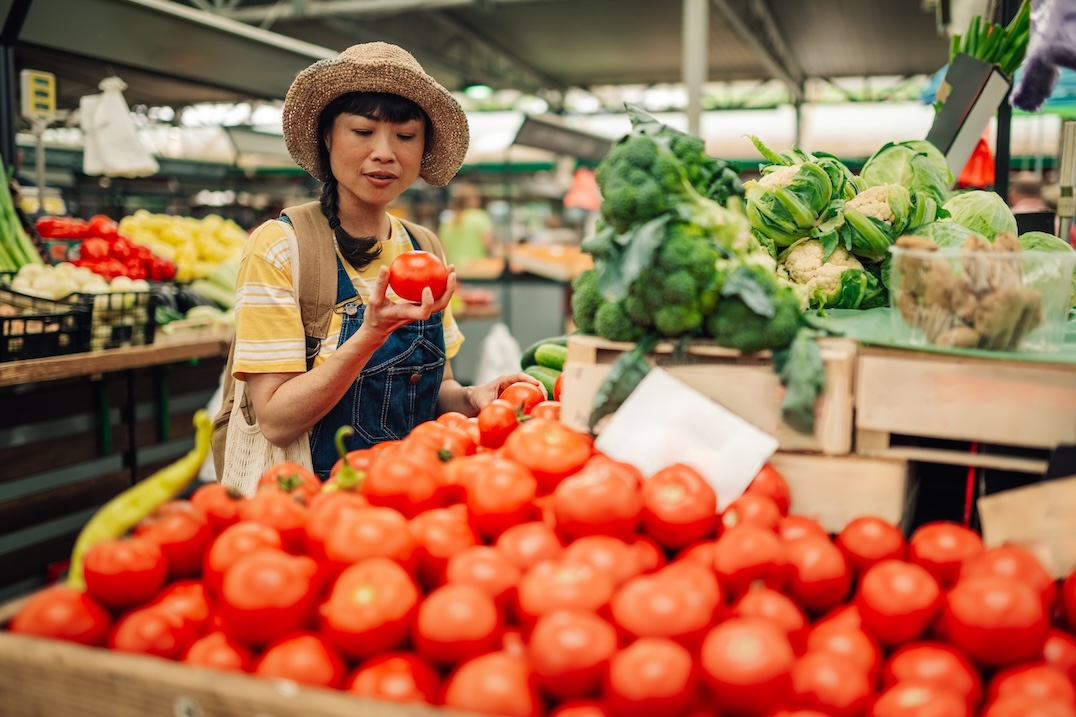Tomatoes are one of the most widely consumed vegetables (technically fruits) worldwide, but not all tomatoes are grown the same way. Many tomatoes available in grocery stores are grown in controlled greenhouse environments, which ensure consistent quality, year-round availability, and reduced pesticide use. But how can you tell if the tomatoes you’re buying are greenhouse grown?
Here’s a guide to spotting greenhouse grown tomatoes based on their appearance, texture, labeling, and seasonality.
1. Uniform Size, Shape, and Color
One of the easiest ways to identify greenhouse grown tomatoes is by their consistent appearance.
Greenhouse Grown Tomatoes:
- Rounder and more uniform in size and shape.
- Even, bright red color without green patches or streaks.
- Smooth skin with fewer blemishes or scars.
Field-Grown Tomatoes:
- More varied in shape and size, with some being irregular or slightly flattened.
- May have uneven ripening, with green or yellowish areas near the stem.
- Can show blemishes, sun spots, or cracks due to outdoor exposure.
Tip: If a batch of tomatoes looks identical in shape, size, and color, they were likely grown in a greenhouse.
2. Skin Texture: Smooth vs. Rough
The skin of a tomato can reveal a lot about its growing environment.
Greenhouse Grown Tomatoes:
- Have thinner, softer skin that feels smooth to the touch.
- Less likely to have cracks, sun spots, or rough patches.
Field-Grown Tomatoes:
- May have thicker, firmer skin to withstand weather and pests.
- More prone to surface blemishes from exposure to wind, rain, and insects.
Tip: If the tomato skin feels smooth and delicate, it’s more likely greenhouse grown.
3. Consistent Firmness and Texture
The way a tomato feels when you hold it can indicate whether it was grown in a greenhouse.
Greenhouse Grown Tomatoes:
- Firm yet slightly springy when gently squeezed.
- Juicy but not overly watery, with a well-balanced texture.
ield-Grown Tomatoes:
- Texture can be softer or more inconsistent, depending on outdoor growing conditions.
- May feel either too firm (underripe) or too soft (overripe) due to uneven ripening.
Tip: If the tomato has a consistent firmness and isn’t too soft or too hard, it was likely grown in a controlled greenhouse environment.
4. Fewer Seeds and Thicker Flesh
Seed content can be a major clue in identifying greenhouse grown tomatoes.
Greenhouse Grown Tomatoes:
- Have fewer seeds, making them less watery.
- Tend to have thicker, meatier flesh, which is great for slicing.
Field-Grown Tomatoes:
- Often contain more seeds and excess liquid, especially in varieties like heirloom tomatoes.
- More fragile, leading to shorter shelf life.
Tip: If you cut into a tomato and find minimal seeds and dense flesh, it’s probably greenhouse grown.
5. Packaging and Labels: The Ultimate Clue
Checking the label is the most reliable way to confirm if tomatoes were grown in a greenhouse.
Labels That Indicate Greenhouse Grown
- “Greenhouse Grown” – Some brands clearly state this on the packaging.
- “Hydroponic” or “Aquaponic” – Indicates the tomato was grown in a water-based system, commonly used in greenhouses.
- “Sustainable” – Many greenhouses market their eco-friendly and year-round growing methods.
Popular greenhouse Tomato Brands
Look for brands that specialize in greenhouse grown tomatoes, such as:
- Nature Fresh Farms
- Red Sun Farms
- Mucci Farms
- Pure Flavor®
- SUNSET®
- Topline Farms
- Double Diamond Farms
- Del Fresco Pure
Tip: If you see tomatoes packaged in plastic clamshells or labeled “hydroponic”, they’re almost certainly greenhouse grown.
6. Seasonality: When Are You Buying Them?
Since greenhouses allow year-round production, availability can indicate whether a tomato was grown indoors.
Greenhouse Grown Tomatoes:
- Available year-round, including winter months.
- Consistently fresh, even in cold weather.
Field-Grown Tomatoes:
- Typically seasonal, peaking in summer and early fall.
- Out-of-season field tomatoes are often imported from warmer climates.
Tip: If you find fresh, ripe tomatoes in the middle of winter, they were likely grown in a greenhouse.
7. Pricing Differences
Since greenhouse growing uses advanced technology and controlled environments, prices may differ from field-grown tomatoes.
Greenhouse Grown Tomatoes:
- Often slightly more expensive than field-grown varieties.
- Prices remain more stable year-round due to consistent supply.
Field-Grown Tomatoes:
- Imported off-season tomatoes may have higher price fluctuations.
Tip: If the price remains steady throughout the year, it’s likely greenhouse grown.
8. Environmental and Sustainability Considerations
Greenhouse growing is known for its eco-friendly advantages:
Water Efficiency – Uses up to 90% less water than traditional field farming.
Lower Pesticide Use – Greenhouses have better pest control, requiring fewer chemicals.
Reduced Carbon Footprint – Greenhouses are often located closer to cities, cutting down on transportation emissions.
Tip: If you’re looking for sustainably grown produce, greenhouse grown tomatoes are a great choice.
Final Summary: How to Identify Greenhouse Grown Tomatoes
If you’re wondering whether your tomatoes were grown in a Greenhouse, check for these signs:
Even, bright red color with no green patches
Round, uniform size and shape
Smooth, thin skin with minimal blemishes
Firm but slightly springy texture
Fewer seeds and thicker flesh
Plastic packaging or labels stating “greenhouse grown” or “hydroponic”
Available year-round, including winter months
Slightly higher but consistent pricing
By keeping an eye on these clues, you can confidently choose greenhouse grown tomatoes for their freshness, consistency, and sustainability.




